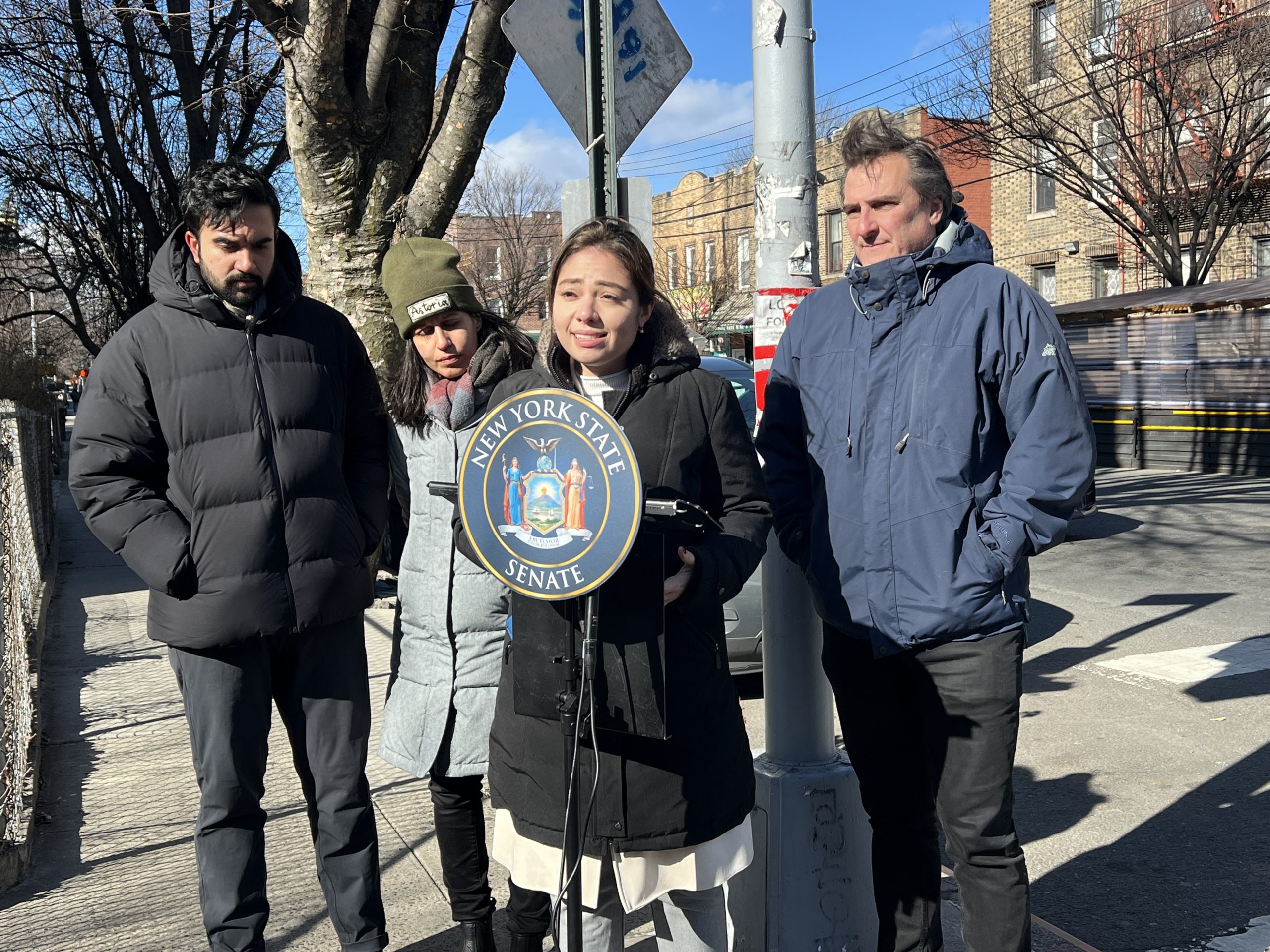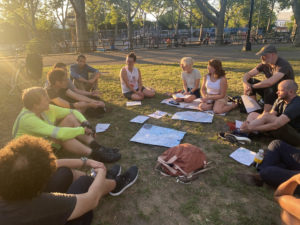Electeds advocate for bike infrastructure a month after tragic death
By Alicia Venter
aventer@queensledger.com

Zohran Mamdani, Tiffany Cabán, Kristen Gonzalez and Michael Gianaris called for more bike lanes.
Last Friday, a month after the tragic death of 62-year-old cyclist Tamara “Tammy” Chuchi Kao in Astoria, the neighborhood’s elected officials gathered at the intersection that she was struck by a cement truck driver to demand the Department of Transportation (DOT) build a north-south bike lane and an east-west bike lane — at the very least.
Assemblyman Zohran K. Mamdani demands it by September, and that the DOT begins commencing workshops immediately to determine where these protective corridors should be built.
“What we need to be clear about is that these are reckless policies that allowed for such deaths to occur,” he said.
In the two and a half years Mamdani has been in office, four cyclists have been killed in the 36th State Assembly District he represents.
According to Crash Mapper, 63 cyclists were injured in collisions from January 2022 to January 2023 in Assembly District 36, with one fatality.
“We see this happening again and again and again,” Mamdani said. “What we are calling for is protected bike lanes in Astoria — not just a north-south [corridor], not just an east-west [corridor], but both.”
He shared that he bikes daily, as do many Astorians, and that greater efforts should be taken by the DOT to ensure that street safety for the neighborhood becomes a priority.
Currently, there is one protected bike lane in Mandani’s district: the north-south corridor on Crescent Street. As for the rest of the neighborhood — more than 98 percent of City Council District 22 according to Spatial Equity NYC — all that counts for a bike lane is paint.
“[These are just] suggestions for where cars should not go. That is where our neighbors are being killed,” Mamdani. “These are preventable deaths, and these are deaths that we must ensure that they stop.”
Councilwoman Tiffany Caban, who represents the 22nd City Council District, denounced the recent proposed budget cuts by the mayor’s office, which would lower the budget over the DOT by over $35 million.
“Street safety is public safety,” Caban said. “We have to do better than these skeleton groups. We need really robust personnel and services.”
The intersection Kao was struck, 29th Street and 24th Avenue, is along the route to the Robert F. Kennedy Bridge, State Senator Michael Gianaris shared. As such, there are often trucks traveling down the street, which poses a danger to bikers and pedestrians.
”We are here today for something that is a tragedy but is remarkably simple in terms of why it happened and how we can fix it. There is not enough infrastructure to protect cyclists in our city, and in this neighborhood specifically,” Gianaris said.
New York State Senator Kristen Gonzalez reinforced that what happened to Kao was not an accident — it was a policy failure. These are preventable crashes, she expressed, and there should be funding to create the infrastructure needed to protect bikers in the community.








